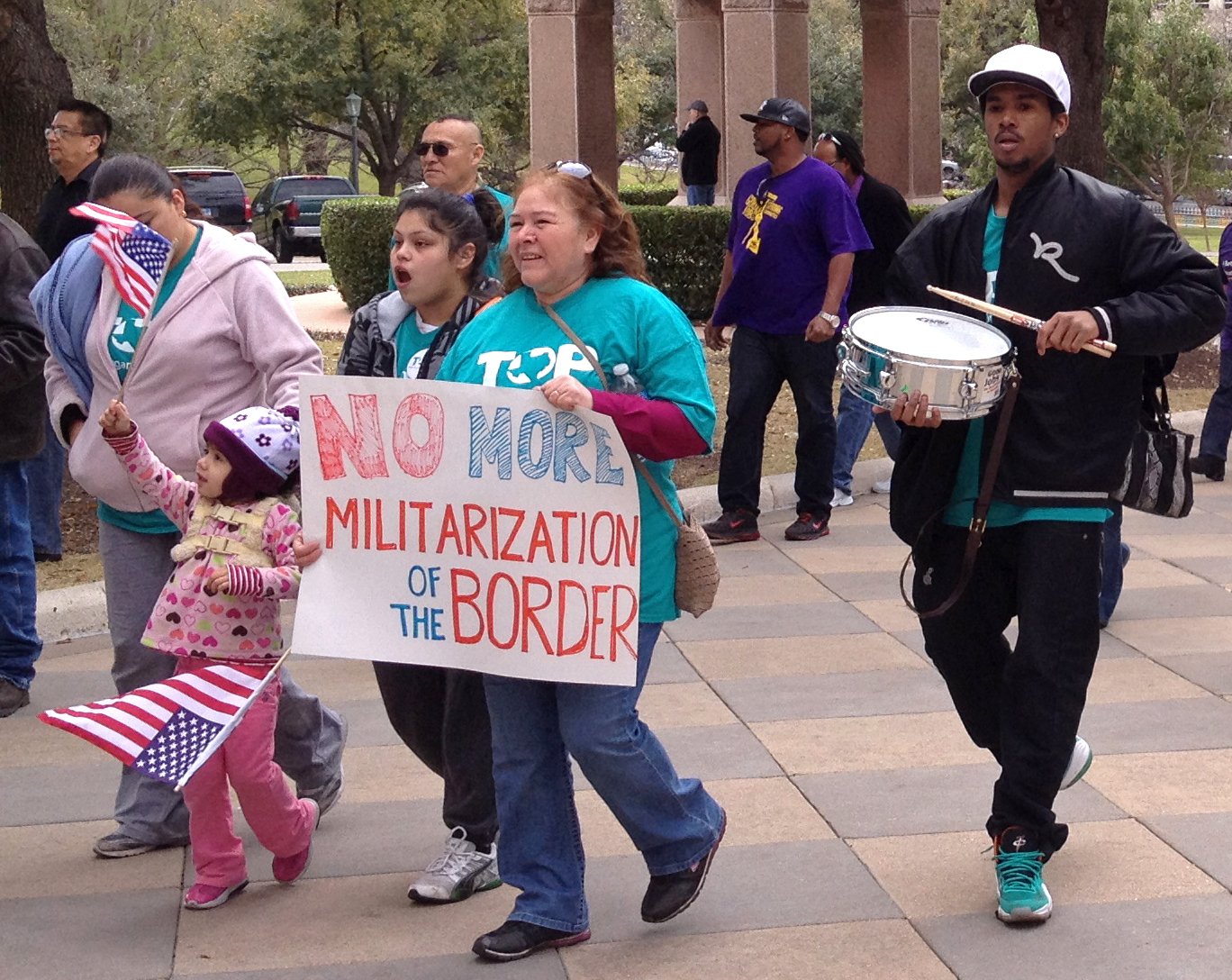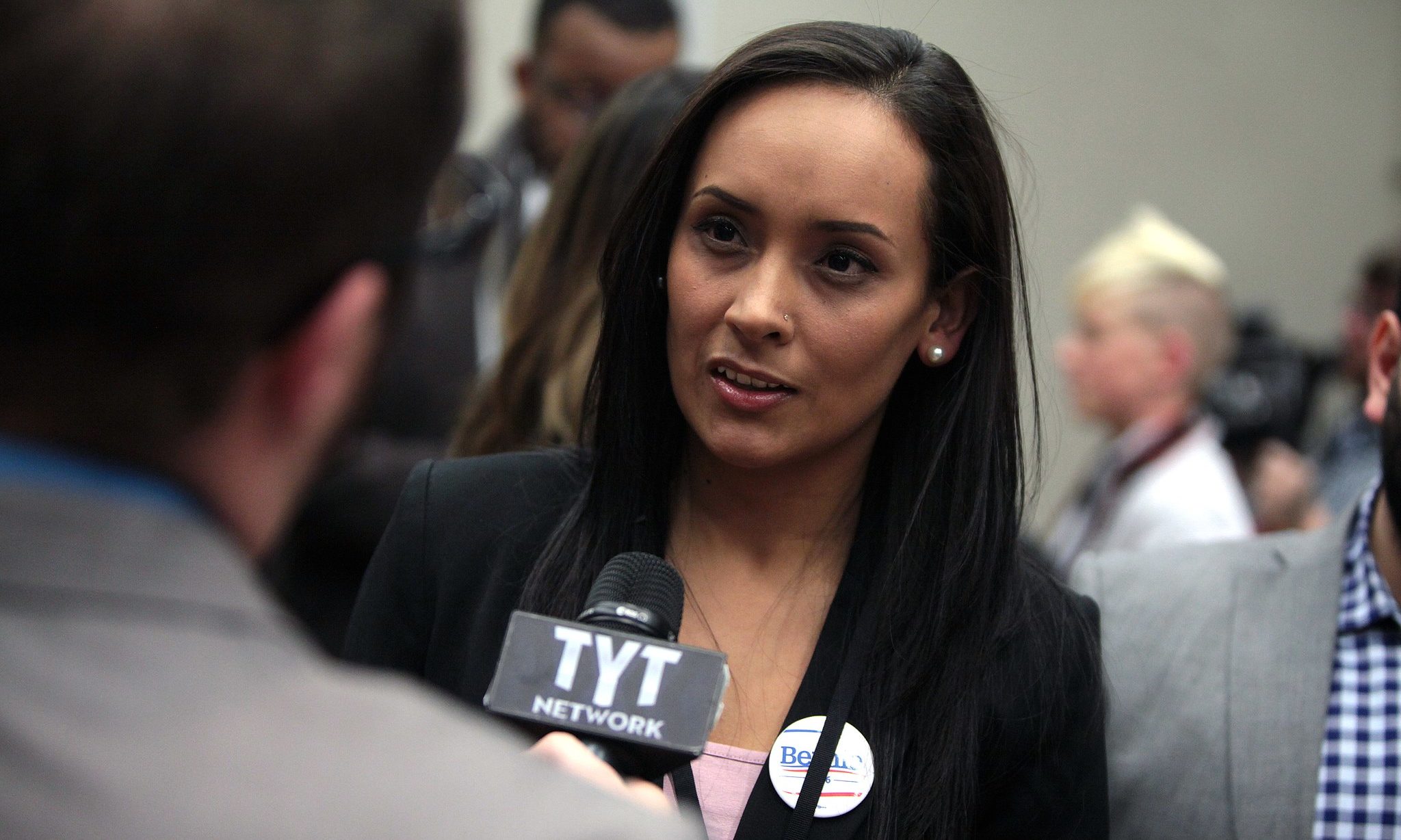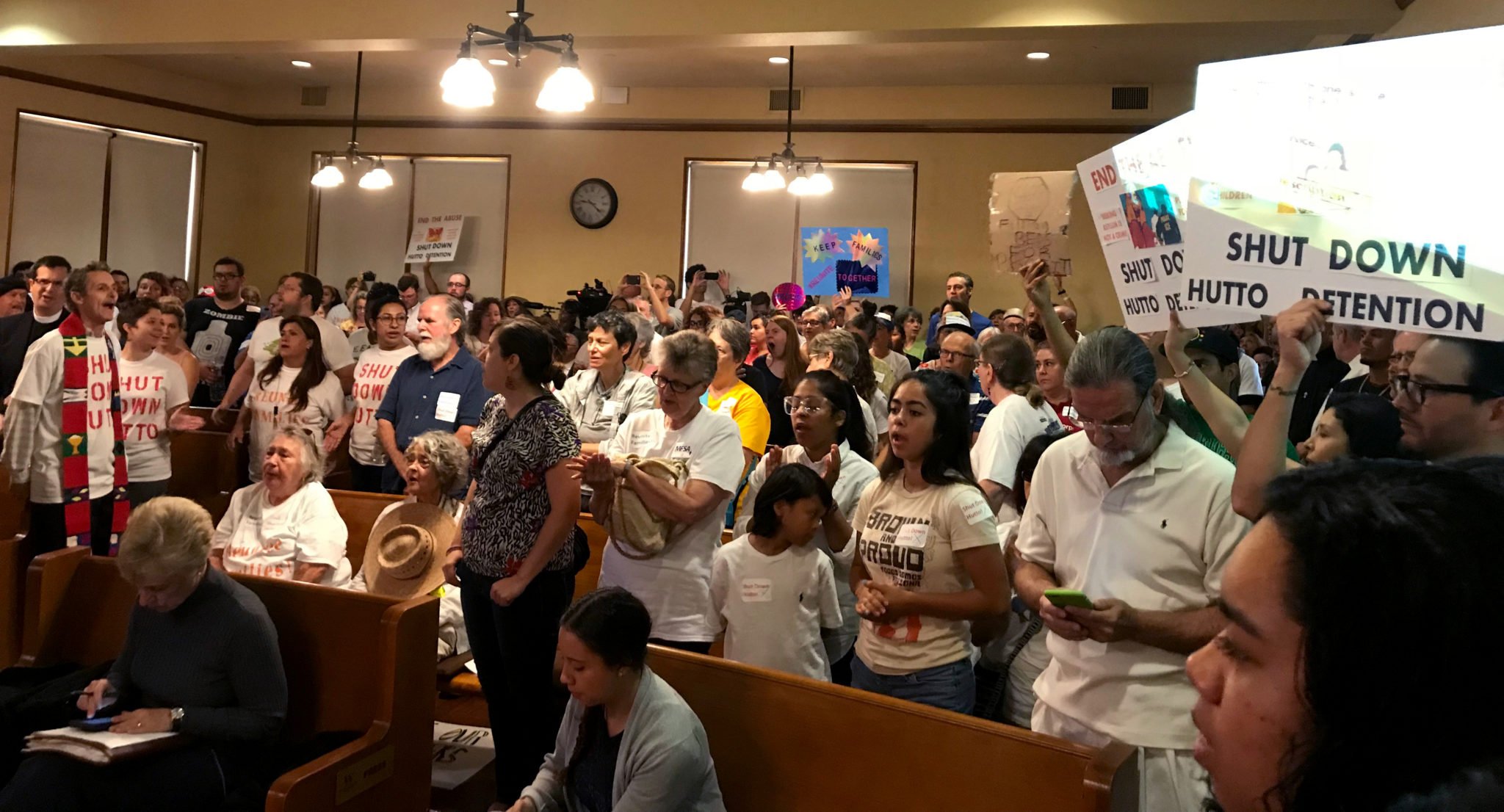
Obama’s Immigration Reform: The Good, the Bad and the Ugly

Above: A march for immigration reform at the Texas Capitol.
After years of struggle and protest, immigrant families finally have something to celebrate. At least four million undocumented immigrants could receive work permits for three years under the executive action.
It’s disappointing though, that the Obama proposal includes more militarization along the border, especially when border communities are begging for more oversight of the existing military-industrial border complex, which has already gotten out of hand.
Another important thing to remember is that this is only a temporary fix. There’s no path to legal residency or citizenship. Without Congress acting to reform our broken system legislatively, we’re going to have an even crazier, more complicated patchwork of temporary visas, temporary work permits, legal resident visas, etc., etc. We’re creating an immigration caste system of people living under provisional agreements, not fully integrated into our society and living under limited legal protections. This creates a nightmare for law enforcement, the courts, and most of all for the families who are subject to the whims of Congress and the next president. What happens at the end of the three-year window?
The battle continues. But for today, let’s celebrate this small miracle. Here’s a breakdown of Obama’s immigration reform: The good, the bad and the ugly.
The Good
1) An expansion of people eligible under the Deferred Action for Childhood Arrivals program, aka DACA.
Prior to the executive action, only those who were under 31 on June 15, 2012, who had entered the U.S. before June 15, 2007 and who were under 16 when they entered the U.S. were eligible. Now all undocumented immigrants who entered the U.S. before the age of 16, and not just those born after June 15, 1981 can qualify for DACA. They’ve also bumped up the U.S. entry date from June 15, 2007 to January 1, 2010. The work permits and relief from being deported will last three years, instead of two.
2) Some parents of U.S. citizens and lawful residents can also get deferred action and a work permit if:
- They have been in the country for at least 5 years;
- Their child was a U.S. citizen as of November 20, 2014;
- Must complete criminal, national security background checks and pay a fee.
The Bad
1) More militarization along the border.
2) Parents of DACA kids do not qualify under the executive action.
3) Nothing in the executive action affects the thousands of women and children being held right now in immigrant detention facilities in New Mexico and Texas.
The (could get) Ugly
1) A Priority Enforcement Program, aka PEP, replaces the controversial Secure Communities program—which encouraged local law enforcement agencies to enforce immigration law. It looks like under PEP, ICE detainers will be replaced by a notfication system among other things.
Cristina Parker, spokesperson for the nonprofit Grassroots Leadership, which helped lead the charge in Texas against the unpopular Secure Communities program, says that her organization and others who have fought against the program for years are celebrating its demise. S-COMM was the reason that many immigrants were deported for minor misdemeanors or traffic infractions.
Parker says they are pessimistic, however, about the new program and eagerly awaiting more details on how it will be implemented. “ICE doesn’t inspire confidence in how it follows directives. It’s a rogue agency. And this really sounds very similar to the first day of S-COMM,” she says. “That’s kind of where we’re at now but we’re trying to be cautiously optimistic.”
Immigration attorney Dan Kowalski is equally pessimistic about any change in policy. “It’s going to be really tough for ICE officers on the ground and managers in the field and D.C. to execute because their whole training is to detect, detain, arrest and deport. It goes against the grain of their training,” he says.
2) The president also directed Homeland Security to revise policies regarding deportation priorities.
Here’s the new policy in brief from the memo:
“DHS is going to implement a new department-wide enforcement and removal policy that places top priority on national security threats, convicted felons, gang members, and illegal entrants apprehended at the border; the second-tier priority on those convicted of significant or multiple misdemeanors and those who are not apprehended at the border, but who entered or reentered this country unlawfully after January 1, 2014; and the third priority on those who are non-criminals but who have failed to abide by a final order of removal issued on or after January 1, 2014.
Under this revised policy, those who entered illegally prior to January 1, 2014, who never disobeyed a prior order of removal, and were never convicted of a serious offense, will not be priorities for removal. This policy also provides clear guidance on the exercise of prosecutorial discretion.”
Again, this will depend a lot on how ICE implements the directive. In the past, they’ve been criticized for doing their own thing and not exercising prosecutorial discretion. The new policy could get ugly if ICE continues to act on its own, and not according to the president’s directives.


